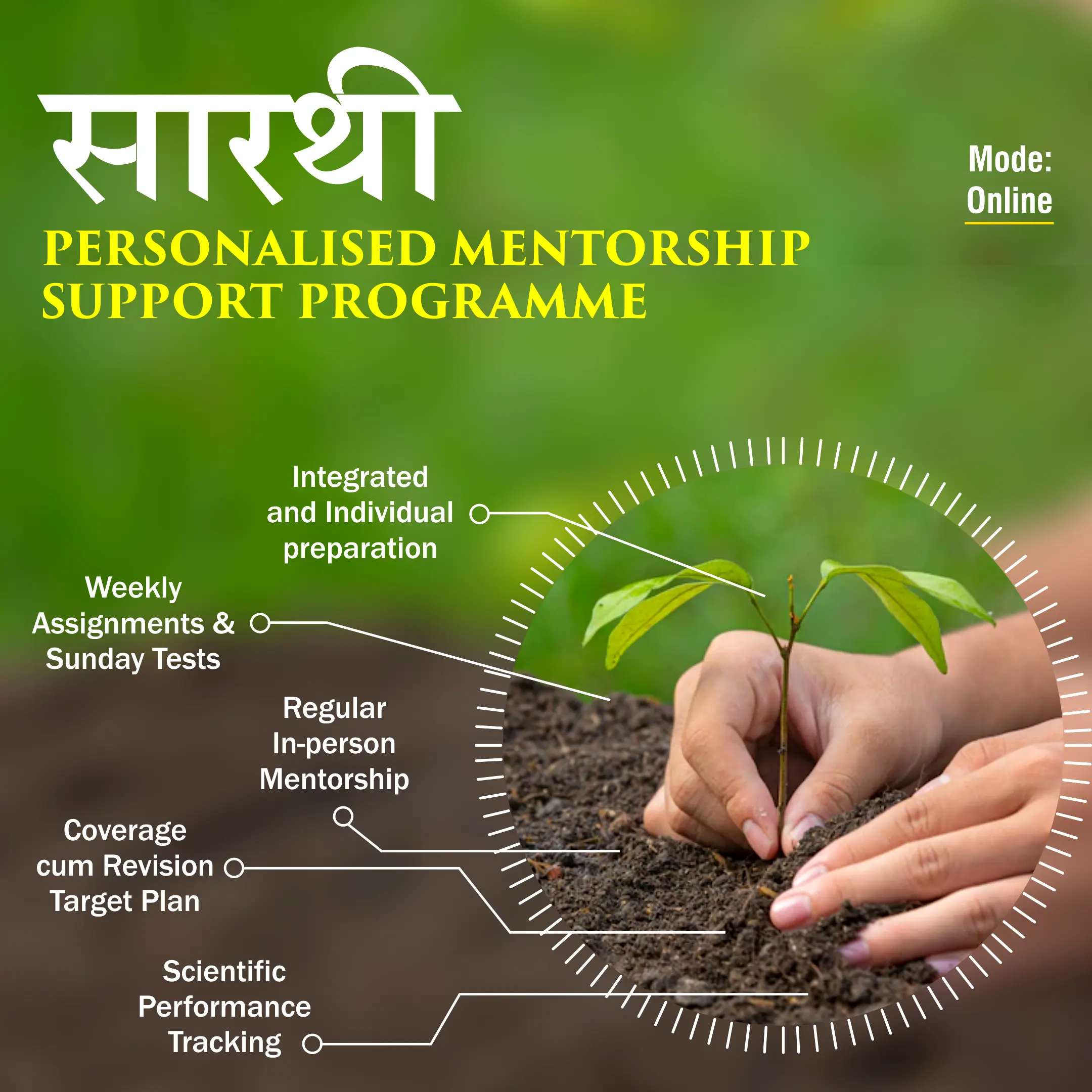
Disclaimer: Copyright infringement not intended.
Context
- Human activities drive risk tipping points like extinctions, depleting groundwater, melting glaciers, space debris, unbearable heat, and an uninsurable future.
Details
What are the six tipping points?
- The world is inching closer to six interconnected risk tipping points, describing immediate and increasing risks across the world, according to a new report from the United Nations University – Institute for Environment and Human Security (UNU-EHS).
- The six risk tipping points include extinctions, depleting groundwater, melting mountain glaciers, space debris, unbearable heat, and an uninsurable future.
- A risk tipping point is the moment at which a given socio-ecological system can no longer buffer risks and provide its expected functions, the report defined.
- After this point, the risk of catastrophic impacts to these systems increases substantially.
The Major Findings of the Interconnected Disaster Risks Report 2023
- The United Nations University-Institute for Environment and Human Security (UNU-EHS) publishes an annual science-based report called the UN Interconnected Disaster Risks Report (first published in 2021).
- Every year, the report examines various real examples of disasters and shows how they are interconnected with one another and with human actions.
- The report shows how seemingly stable systems can deteriorate gradually until a critical threshold is passed, resulting in disastrous effects.
- It proposes the concept of "risk tipping points," or times when socio-ecological systems can no longer buffer hazards and face a greater chance of catastrophic consequences.

Tipping Points
The report highlights that the world is approaching six environmental tipping points
Groundwater Depletion:
- Groundwater stored in aquifers is vital for over 2 billion people, with 70% used for agriculture.
- However, 21 of the world's main aquifers are being depleted faster than they can be replenished.
- Aquifer water is often thousands of years old and is essentially non-renewable.
- Over-extraction has occurred in some locations, such as Saudi Arabia, which has depleted more than 80% of its aquifer. This forces reliance on imported crops, causing food security issues.
- Certain regions of India's Indo-Gangetic basin have already passed the critical groundwater depletion barrier, and the entire northwestern region is anticipated to have severely reduced groundwater supplies by 2025.
Accelerating Species Extinctions:
- Human activities like land use changes, overexploitation, and climate change have accelerated species extinction.
- Current extinction rates due to human influence are hundreds of times higher than normal.
- Extinction can trigger a chain reaction, causing the collapse of ecosystems.
Melting Mountain Glaciers:
- Glaciers are important water sources, but they are melting at twice the rate owing to global warming.
- Glaciers lost 267 gigatonnes of ice per year between 2000 and 2019.
- Even with moderate warming, we are expected to lose approximately half of our glaciers by 2100.
- The Himalayan, Karakoram, and Hindu Kush glaciers, as well as the over 870 million people who rely on them, are under threat.
Space Debris:
- Satellites are essential for weather monitoring, communication, and safety, but the increasing number of satellites in space is producing a space debris problem.
- Only 25% of the objects in orbit are active satellites, with the remainder being non-functional junk.
- There are around 130 million tiny, untraceable debris fragments.
- These particles travel at great speeds and threaten operating satellites, producing a hazardous orbital environment.
Unbearable Heat:
- As a result of climate change, more deadly heat waves are occurring.
- Heat and humidity make it difficult for the body to cool down.
- When the "wet-bulb temperature" hits 35°C for more than six hours, organ failure and brain damage might occur. This has already happened in areas such as Jacobabad, Pakistan.
- In addition, wet-bulb temperatures in India exceeded 34°C during a heatwave in 2023.
- By 2100, it is anticipated to affect more than 70% of the world's population.
Uninsurable Future:
- Since the 1970s, frequent severe weather has caused a sevenfold increase in damages, with USD 313 billion in losses in 2022.
- Because of climate change, insurance rates are growing, making coverage unaffordable for many people.
- Some insurers are leaving high-risk areas, resulting in the designation of those locations as "uninsurable."
- For example, due to increased flood risk, approximately 520,940 properties in Australia may become uninsurable by 2030.
Interconnectedness:
- Climate change, caused by increased greenhouse gas emissions, operates as a common driver of tipping points.
- This includes the melting of glaciers, harsh weather occurrences, and changes in the insurance risk landscape.
- These interconnected environmental challenges can cause feedback loops, such as rising sea levels caused by glacier melt, exacerbated coastal flooding, and increased demand for disaster insurance.
- These tipping points, in the end, have substantial socioeconomic implications.

The Major Drivers of Increasing Disaster Risks
Urbanization:
- Rapid urbanization occurs frequently in the absence of sufficient planning and infrastructure development.
Environmental Degradation:
- Deforestation, soil erosion, and pollution degrade natural ecosystems' potential to act as disaster buffers.
- The effects of hazards are exacerbated by environmental degradation.
Inadequate and Inefficient Infrastructure:
- During disasters, inadequately built or maintained infrastructure, such as bridges, buildings, and roads, can collapse, resulting in major economic and social losses.
Inadequate Land Use Planning:
- Poor land use planning can lead to communities settling in high-risk areas such as floodplains or wildfire-prone zones.
- This relates to increased vulnerability to calamities.
Water Management Issues:
- Poor water resource management can result in droughts, scarcity, and flooding.
worldwide Interconnectedness:
- As the world becomes more connected, upheavals in one place can have worldwide consequences.
What solutions does the report recommend to mitigate disaster risk?
The UN Interconnected Disaster Risks Report 2023 employs a four-category structure to classify and prioritize disaster risk mitigation measures.
Avoid-Delay:
- These are actions that seek to slow down disasters utilizing present approaches.
- For example, strong construction codes and land-use regulations can help to avert catastrophic disaster damage.
Avoid-Transform:
- These efforts aim to prevent disasters by radically altering how things are done.
- For example, to prevent the dangers related to climate change, switching from fossil fuel-based energy production to renewable energy sources (such as solar and wind).
Adapt-Delay:
- These acts prepare us for calamities by allowing us to respond more slowly.
- For example, enhanced early warning systems for tsunamis could provide people time to evacuate and prepare for the calamity.
Adapt-Transform:
- These steps entail making significant adjustments to how we do things in order to adapt to disasters.
- Implementing coastal zoning rules and rebuilding natural barrier habitats (such as mangroves) are two examples of how to adapt to increasing sea levels and transform coastal protection techniques.
The Initiatives for Disaster Risk Reduction
Global:
- Sendai Framework for Disaster Risk Reduction 2015-2030
- The Climate Risk and Early Warning Systems (CREWS)
- International Day for Disaster Risk Reduction - 13th October
- Green Climate Fund’s Sectoral Guide on Climate Information & Early Warning Systems
India’s Initiatives:
- Coalition for Disaster Resilient Infrastructure Society (CDRIS)
- National Disaster Management Plan (NDMP)

Way Forward
- To overcome these issues, we must emphasize global collaboration, commit to aggressive emissions reductions to battle climate change, invest in renewable energy, safeguard biodiversity, strengthen global health systems, and strengthen international conflict resolution institutions.
- We must work together as a global society to alleviate these immediate dangers while also creating a resilient and egalitarian future for all.
- Collaboration, responsible governance, and a global commitment to sustainable development are critical if we are to avoid the abyss and establish a more secure, peaceful society.
|
PRACTICE QUESTION
"Discuss the importance of the United Nations' 'Interconnected Disaster Risks Report 2023' in the context of global disaster management and climate resilience. (150 words)
|




